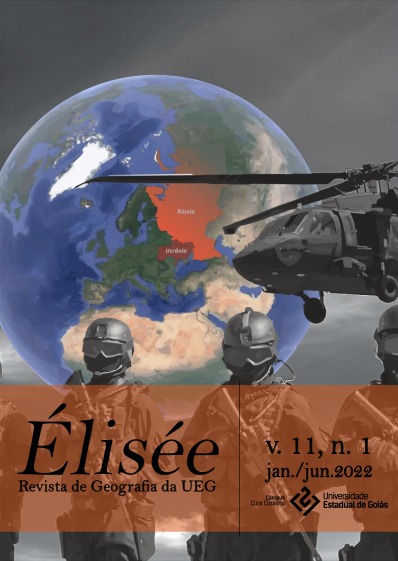Emergency remote teaching and student vulnerability at the State University of Goiás, Brazil, 2021
Emergency remote teaching and student vulnerability at the State University of Goiás, Brazil, 2021
DOI:
https://doi.org/10.31668/elisee.v11i1.13238Keywords:
Teaching; Remote; Pandemic; Covid-19; Vulnerability; UEG.Abstract
The Covid-19 pandemic demanded responses, on several fronts, from public institutions that deal with teaching, research, and extension activities. In addition to offering answers to challenges linked to the field of public health, these institutions needed to adapt their normative routines, especially in the context of social isolation. The academic community quickly got busy building, debating, and approving a set of rules to regulate Emergency Remote Teaching (ERE). In this context, and based on the recognition of the difficulties of operationalizing the ERE, within the scope of the research activities developed by the Brazilian Social State Observatory team, an effort was made to offer the academic community a portrait of the conditions of remote teaching developed at State University of Goiás (UEG), from the students' perspective. The way to diagnose this situation passed, therefore, through the characterization of academic aspects and home infrastructure and socioeconomic aspects. Conducted by means of an objective, unidentified electronic form, the research consisted of 49 questions sent by e-mail or by WhatsApp messaging application. Between 08/01/2021 to 09/15/2021 was applied the questionnaire. From enrolled in 28 different UEG units and residents in 88 municipalities in Goiás and 12 municipalities in neighboring states, a total of 997 responses were received. The results point to the challenges and development impacts of the ERE in a multicamp university.
References
BRASIL. Emenda Constitucional nº 95, de 15/12/2016. In: http://www.planalto.gov.br/ccivil_03/constituicao/emendas/emc/emc95.htm. Acesso em 27/02//2022.
CAMPANTE, Filipe; CRESPO, Anna; LEITE, Phillippe. Desigualdade salarial entre raças no mercado de trabalho urbano brasileiro: aspectos regionais. Rev. Bras. Econ. 58 (2), 5jun. 2004.
IBGE. Censo Brasileiro de 2010. Rio de Janeiro: IBGE, 2010. Disponível em: https://censo2010.ibge.gov.br/ Acesso em 15/02/2022
IBGE. Estatísticas de Gênero: indicadores sociais das mulheres no Brasil. Rio de Janeiro: IBGE, 2016. Disponível em: https://www.ibge.gov.br/estatisticas/multidominio/genero/20163-estatisticas-de-genero-indicadores-sociais-das-mulheres-no-brasil.html?=&t=resultados. Acesso em: 17/02/2021.
IBGE. Censo Agropecuário 2017. Rio de Janeiro, IBGE, 2018.
IBGE. Pesquisa Nacional por Amostra de Domicílios (PNAD). 2021. Disponível em: https://www.ibge.gov.br/estatisticas/sociais/trabalho/9171-pesquisa-nacional-por-amostra-de-domicilios-continua-mensal.html?=&t=o-que-e. Acesso em 15/02/2022.
MARTINS, APV. Gênero, ciência e cultura. In: Visões do feminino: a medicina da mulher nos séculos XIX e XX [on-line]. Rio de Janeiro: Editora Fiocruz, 2004.
MELO, H. P. de, & MORANDI, L. A divisão sexual do trabalho no contexto da pandemia. Revista Trabalho Necessário, 19(38), 105-125. https://doi.org/10.22409/tn.v19i38.45884. Acesso em 05/02/2022.
OBSERVÁTORIO DO ESTADO SOCIAL BRASILEIRO. Microdados – Pesquisa: Ensino Remoto Emergencial e Vulnerabilidade Discente. 2021. Disponível em: http://obsestadosocial.com.br/documentos/ Acesso em: 15/02/2022.
PEUGNY, Camille. O destino vem de berço? Campinas, Papirus, 2014.
Downloads
Published
Issue
Section
License
Os autores não serão remunerados pela publicação de trabalhos na Élisée - Revista de Geografia da UEG.
Os conteúdos publicados, contudo, são de inteira e exclusiva responsabilidade de seus autores, ainda que reservado aos editores o direito de proceder a ajustes textuais e de adequação às normas da publicação.
Autores que publicam nesta revista concordam com os seguintes termos:
- Autores mantém os direitos autorais e concedem à revista o direito de primeira publicação, com o trabalho simultaneamente licenciado sob a Licença Creative Commons Attribution 4.0 que permite a distribuição deste material, desde que cumpra os seguintes requisitos:
- Atribuição — Você deve atribuir o devido crédito, fornecer um link para a licença, e indicar se foram feitas alterações. Você pode fazê-lo de qualquer forma razoável, mas não de uma forma que sugira que o licenciante o apoia ou aprova o seu uso;
- NãoComercial — Você não pode usar o material para fins comerciais;
- SemDerivações — Se você remixar, transformar, ou criar a partir do material, não pode distribuir o material modificado.
- Autores têm autorização para assumir contratos adicionais separadamente, para distribuição não-exclusiva da versão do trabalho publicada nesta revista (ex.: publicar em repositório institucional ou como capítulo de livro), com reconhecimento de autoria e publicação inicial nesta revista.














